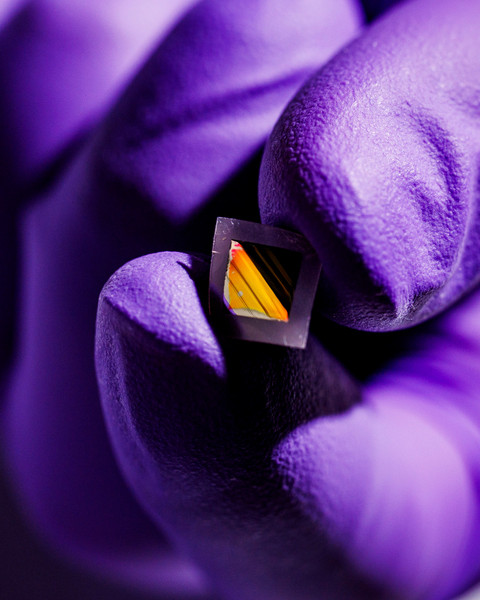April 23, 2025
MIT engineers have developed a technique to grow and peel ultrathin “skins” of electronic material. The method could pave the way for new classes of electronic devices, such as ultrathin wearable sensors, flexible transistors and computing elements, and highly sensitive and compact imaging devices.
As a demonstration, the team fabricated a thin membrane of pyroelectric material — a class of heat-sensing material that produces an electric current in response to changes in temperature. The thinner the pyroelectric material, the better it is at sensing subtle thermal variations.
With their new method, the team fabricated the thinnest pyroelectric membrane yet, measuring 10 nanometers thick, and demonstrated that the film is highly sensitive to heat and radiation across the far-infrared spectrum.
The newly developed film could enable lighter, more portable, and highly accurate far-infrared (IR) sensing devices, with potential applications for night-vision eyewear and autonomous driving in foggy conditions. Current state-of-the-art far-IR sensors require bulky cooling elements. In contrast, the new pyroelectric thin film requires no cooling and is sensitive to much smaller changes in temperature. The researchers are exploring ways to incorporate the film into lighter, higher-precision night-vision glasses.
Complete article from MIT News.
Explore
III-Nitride Ferroelectrics for Integrated Low-Power and Extreme-Environment Memory
Monday, May 5, 2025 | 4:00 - 5:00pm ET
Hybrid
Zoom & MIT Campus
MIT Engineers Print Synthetic “Metamaterials” that are Both Strong and Stretchy
Jennifer Chu | MIT News
A new method could enable stretchable ceramics, glass, and metals, for tear-proof textiles or stretchy semiconductors.
Physicists Measure a Key Aspect of Superconductivity in “Magic-angle” Graphene
Jennifer Chu | MIT News
By determining how readily electron pairs flow through this material, scientists have taken a big step toward understanding its remarkable properties.




